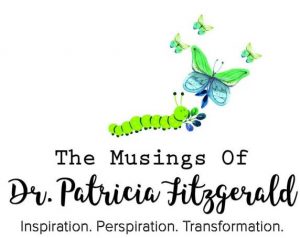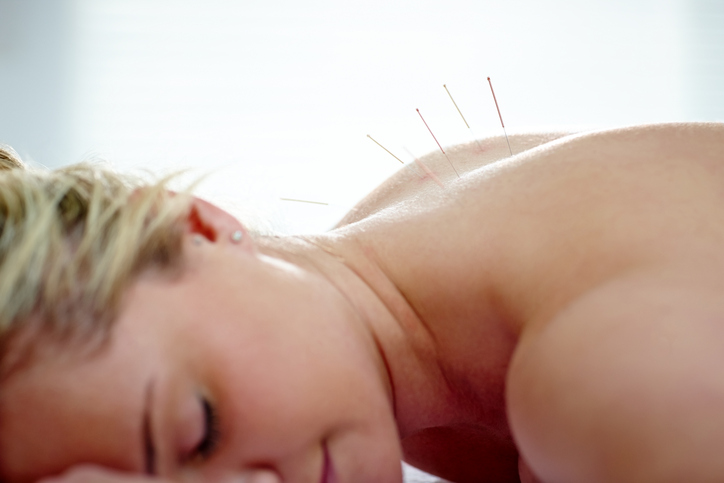When I first started practicing acupuncture in the 1980s, the most frequent question asked by patients was “does acupuncture really work?”
These days, thanks to advances in research, medical endorsements, and plenty of positive press, the conversation has changed from “does acupuncture work?” to “how does acupuncture work?”
Up until recently, its profound effects could only be described by explaining the Traditional Chinese Medicine principle of “Qi”—the energy or “life force” that flows through our body, organs, and systems. If our qi is balanced, we experience health, if it is imbalanced—too strong or too weak—in one organ or system, we experience disharmony that leads to disease.
For some patients in those early years, the explanation of Qi theory was enough…or at least enough to sustain them until they experienced results from their treatments. But for others it was a tough concept to grasp, especially in Western culture where we have such reverence for the tangible, explainable, and scientific.
Fast-forward to present-day, and neural imaging and advanced anatomical research is proving the science behind the how acupuncture works on a physiological level.
In today’s post, we will step away from Qi theory and instead look at the hard-science behind how acupuncture works to treat disease.
The Mechanics on How an Acupuncture Treatment Works
If you have already experienced acupuncture, go ahead and skip to the next section, but for those who haven’t, here are the mechanics behind how an acupuncture treatment works:
- An acupuncture session starts with a thorough intake including health history, tongue diagnosis (where we look for specific signs of health status by observing the shape, size, and color of your tongue), and pulse taking.
- After that, the patient lies on a treatment table (like a massage table) and the acupuncturist inserts hair-thin needles into specific acupuncture points on the skin.
- These acupuncture points all correspond to specific organs in the body which are connected through your meridian system—think of it as an invisible pathway of energy running through your body.
- The needles are placed on acupuncture points to re-balance the Qi of your systems and organs. Though it may sound painful, the needles are so thin you typically feel nothing more than a firm to gentle tap on the skin.
- Then the patient is asked to rest and relax (and it is relaxing) while the needles do their work.
- After some time has passed (usually 20-35 minutes) the needles are removed and, unless the acupuncturist determines otherwise, the treatment is complete.
Patients almost always leave feeling deeply relaxed, re-balanced, pain-free, and often more energetic than when they arrived.
Now that you know the mechanics of a treatment, let’s look at the physiology and science behind how those needles work their magic.
Korean Study Proves the Meridian System Exists on Physical Level
As mentioned above, Meridians are the energy pathways that connect the Qi to the different acupuncture in relation to the organs and systems of the body.
For example, if you were suffering from asthma your acupuncturist may place needles along the lung meridian point (among others) to balance that lung energy.
Meridian theory has always been difficult for the Western population to grasp, as Meridians could never be measured on a physical, anatomical basis…until 2013 when Korean researchers began proving the existence of Meridians through a newly discovered system coined: The Primo Vascular System or PVS1.
Researchers from the study state:
“The PVS is a previously unknown system that integrates the features of the cardiovascular, nervous, immune, and hormonal systems. It also provides a physical substrate for the acupuncture points and meridians….
“We propose a new vision of the anatomical basis for the PVS and the vital energy—called “Qi”—as an electromagnetic wave that is involved very closely with the DNA in the PVS. DNA provides genetic information and it functions as a store of information that can be obtained from the electromagnetic fields of the environment.”
The new research on the Primo Vascular System’s existence is an exciting development in validating an age-old Eastern philosophy in the West; but there is more science to back up how acupuncture works on specific ailments, let’s look at this now.
How Acupuncture Re-patterns Your Brain to Feel Less Pain
Pain and musculoskeletal conditions, are one of the top reasons people seek acupuncture, and they are also the most documented conditions in which acupuncture has proven effective.
But, how does acupuncture work, physiologically, on pain?
Neural imagining research, such as reported by Autonomic Neuroscience2, have shown acupuncture produces specific changes in the regions of the brain that control and process pain. Other studies from the American Pain Society3 found similar results for pain, but also cognitive and sensory function, and research using MRIs found the same results held true for patients with carpal tunnel syndrome4.
How Acupuncture Relieves Stress and Stress-Related Conditions
Stress relief is another top reason people receive acupuncture. As we have talked about in previous posts, stress lies at the root of nearly all chronic degenerative disease.
A study conducted by medical researchers at Georgetown University5 showed acupuncture works on balancing the stress response by reducing the levels of a specific protein (protein neuropeptide Y (NPY) linked to the fight-or-flight response and chronic stress.
Acupuncture has also been proven to increase your body’s production of endorphins and other feel good hormones and chemicals, while reducing stress hormones like cortisol, which also explains the relaxing and rejuvenating sensations patients experience from treatment.
Given the role chronic stress plays in nearly all disease, the findings of these studies are significant as they prove acupuncture’s beneficial effects on nearly all types of chronic disease.
How Does Acupuncture Work for Fertility?
Acupuncture treatments for enhancing fertility have become popular among individuals and couples suffering from infertility.
It is so popular that many Western reproductive health experts often refer patients to acupuncturists when modern science fails.
Case in point: a 2002 German study of 160 women published in the Reproductive Health Journal of Fertility and Sterility found that when acupuncture was added to traditional In Vitro Fertilization procedures, their effectiveness was substantially increased (34 pregnancies in the acupuncture IVF group, vs 21 pregnancies in the IVF-only group)6.
But how does acupuncture enhance fertility in men and women?
Studies have shown acupuncture can alter the release of various hormones associated with fertility, such as prolactin, oxytocin, luteinizing and growth hormone, and modulate thyroid function7 8 9. This, coupled with the stress-reducing affects which also affect hormones, goes a long way to explaining the connection between acupuncture success with fertility in men and women.
What Other Conditions Has Acupuncture Been Proven to Work For?
We touched on how acupuncture works on the top conditions it is sought out for. However, there is so much more to the story.
In 2003 the World Health Organization published a report entitled: “Acupuncture: Review and Analysis of Reports on Controlled Clinical Trial”10 on the efficacy of acupuncture in treating over 100 conditions including:
- Adverse reactions to radiotherapy and/or chemotherapy
- Allergic rhinitis (including hay fever)
- Biliary colic
- Depression (including depressive neurosis and depression following stroke)
- Dysentery, acute bacillary
- Dysmenorrhoea, primary
- Epigastralgia, acute (in peptic ulcer, acute and chronic gastritis, and gastrospasm)
- Facial pain (including craniomandibular disorders)
- Headache
- Hypertension, essential
- Hypotension, primary
- Induction of labour
- Knee pain
- Leukopenia
- Low back pain
- Malposition of fetus, correction of
- Morning sickness
- Nausea and vomiting
- Neck pain
- Pain in dentistry (including dental pain and temporomandibular dysfunction)
- Periarthritis of shoulder
- Postoperative pain
- Renal colic
- Rheumatoid arthritis
- Sciatica
- Sprain
- Stroke
- Tennis elbow
It has been such an honor to observe the resolution of these, and countless other ailments in my patients and colleagues throughout my 30+ years in practice.
Today, the scientific part of my brain loves reading and sharing the latest research behind the why and how acupuncture works. And the other part me that originally fell in love with Chinese Medicine over 30 years ago, still connects with the theory of energetic medicine; the Qi, the meridian system, and the profound impact of the energetic body/life force on the physiology of all living things. I continued to be amazed with the profound effects that acupuncture has on my patients, my animals, and myself.
I hope today’s post has helped you see the validity of acupuncture and Traditional Chinese Medicine in a whole new light. I am continually amazed at the results I see in patients, and I hope this post has provided insights as to the “mystery” of acupuncture in a whole new light.
-Dr. Patricia
References:
- https://www.ncbi.nlm.nih.gov/pubmed/24290797
- “Neural mechanisms of acupuncture as revealed by fMRI studies.” Autonomic Neuroscience (2015).
- “Inserting needles into the body: a meta-analysis of brain activity associated with acupuncture needle stimulation.” Journal of Pain (2003).
- “Somatosensory cortical plasticity in carpal tunnel syndrome treated by acupuncture.” Human Brain Mapp (2006)
- https://www.georgetown.edu/news/acupuncture-stress-reduction-study.html
- “Influence of acupuncture on the pregnancy rate in patients who undergo assisted reproduction therapy.” Reproductive Health Journal of Fertility and Sterility (2002)
- Pullan PT et al: Endogenous opiates modulate release of growth hormone in response to electro acupuncture, Life Sci 32: 1705-1709, 1983.
- Smith FWK: The neurophysiological basis of acupuncture. In Schoen AM: Veterinary acupuncture , St. Louis , 1994, Moxby, pp 33-53.
- Bossut DFB et al: Electro acupuncture-induced analgesia I sheep: measurement of cutaneous pain thresholds and plasma concentrations of prolactin and B -endorphin immunoreactivity, Am J Vet Res 47:669-676, 1986.
- “Acupuncture: Review and Analysis of Reports on Controlled Clinical Trial”

